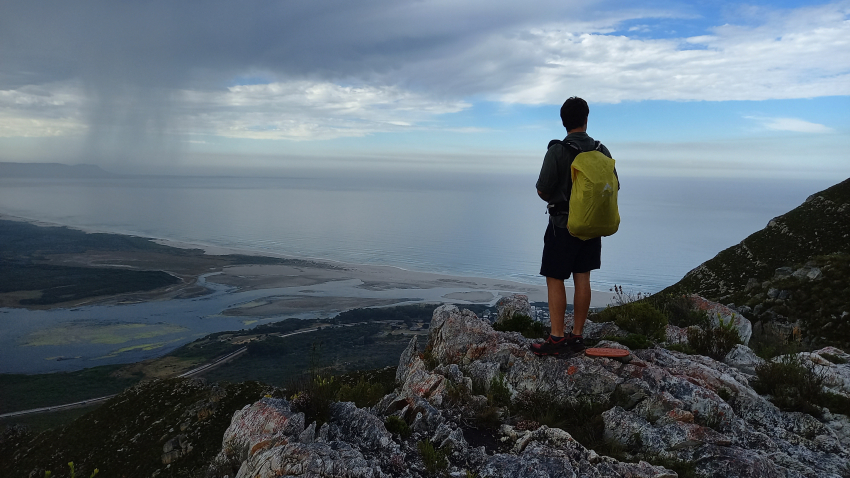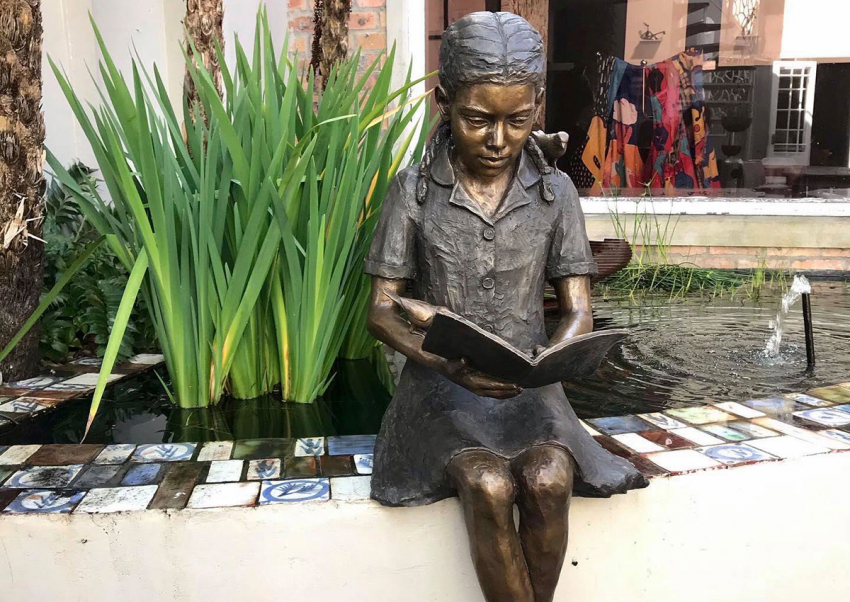Over the last decade the Hemel-en-Aarde valley has become quite famous for its wines, but from 1817-1846 it was known as a place of sorrow. The isolation deep in the valley seemed to have been the reason that the Leper Institution was placed there. We do not know who first called the valley Hemel-en-Aarde, but the name was very well chosen, as one early author wrote: “Omdat het oog over de Bergen slechts den hemel kan zien.” (Because over these mountains you can surely see heaven). The surrounding hills which closely embrace the valley are so high that they seem to touch the sky and you cannot see anything but heaven and earth. According to government correspondence at that time, the name existed before the lepers came to the valley.
There is a story of a land surveyor who said one night: “Vandag het ek die hemel en aarde gemeet en die Engel het die ketting gesleep”(Today I measured heaven and earth and Engel dragged the chain). Engel was his assistant.
When the first report of leprosy in South Africa came from the Stellenbosch district in 1756, it was decreed that lepers should not be allowed to mix with healthy people. Hottentots afflicted with leprosy were thereafter put under quarantine in a remote place near Swellendam.
Sixty years later Lord Charles Somerset realized that the problem of lepers needed his urgent attention. He told the Swellendam Landdrost to find a healthy spot for the confinement of people stricken with leprosy. A farm situated in Attaquas Kloof, known as the Hemel-en-Aarde, was chosen. This farm belonged to a widow Susan Niemand who was herself a leper. A settlement of huts and vegetable gardens was established. Soon after this a hospital and residence were planned and built by George Nicol, a stonemason from Caledon. The inscription on the front gable of the hospital read “1820. Erected by the English Government for the Benefit of the Lepers”. By the end of the first year there were about 120 patients.
Leprosy is a disease that reminds us of Biblical history. Moses gave strict laws regarding those suffering from this stigmatized malady. Almost two thousand years later Jesus healed all lepers who came to Him for help. Some Bible scholars regards leprosy as a religious affliction rather than a hygienic one. Lepers were not allowed to live with healthy people, but always dwelled outside the camp or town. They often lived in caves where the families used to bring them food and other provisions.
During my research I gleaned most of the information from John Annandale’s book: “Hemel-en-Aarde and the Leper Colony”. (The story of the Leper Colony and the Moravian Mission’s involvement at the Hemel-en-Aarde 1817-1846). Annandale spent many years researching the subject and recorded one of the most comprehensive and praiseworthy studies.
The patients on the farm tended their own gardens and were most successful with vegetables. Fishing had been forbidden after two of them had been washed off the rocks and drowned. The carers were kept very busy. Two dozen sheep were slaughtered and distributed every sixth day. Rations of flour, sugar, soap and tea had to be shared according to the amounts fixed by the government. Each patient received a piece of land for his own use. A large piece of land was worked by all those who were strong enough to help and it supplied vegetables for the common kitchen.
None of the patients in Hemel-en-Aarde had wanted to live there voluntarily but were to by their illness, somehow their destiny. The influx of new patients had never ceased and others died. Some of them ran away at night. About 400 lepers are said to be buried in Hemel-en-Aarde, whilst three types of leprosy were report, vix: Elephantiasis, Leontiasis and Lazarus disease. Nowadays both the lepers and the buildings that housed them are gone, leaving only the memories behind.
Article extracted from SJ du Toit – Whale Capital Chronicles I, Page 9.
Should you wish to use any of her stories please contact SJ du Toit directly.




























